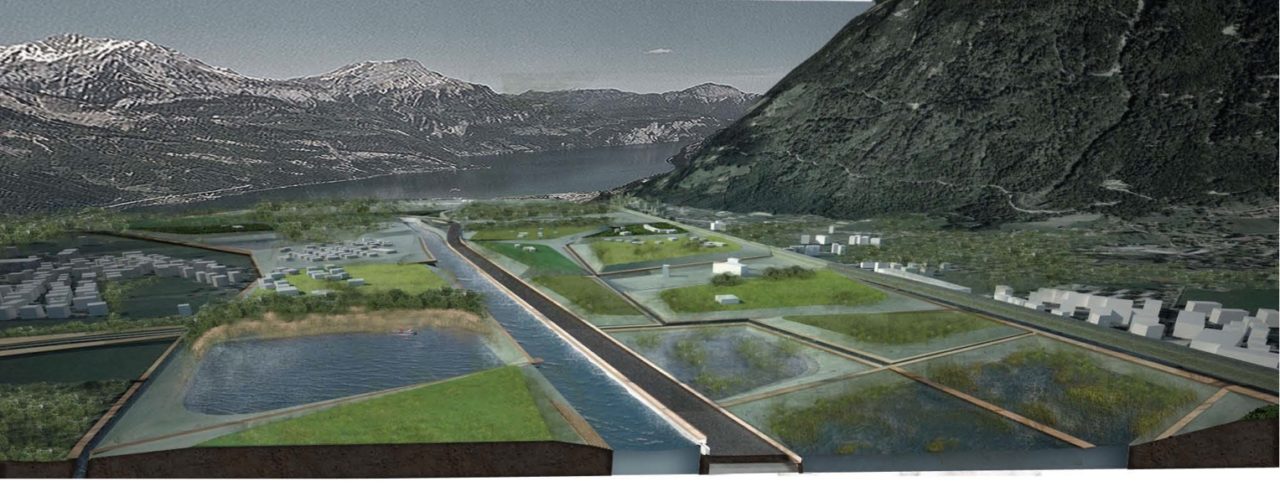
The valley at Erstfeld is a complex mix of infrastructural systems, including the local and regional train networks, the highway and the Reuss river. The recent opening of the northern entrance to the Alp Transit tunnel project is the latest transformation to the valley system. Within the MAS Landscape Architecture (LA) design studio, the majority of the students chose to react to the complex issues facing Erstfeld and its surroundings with a holistic approach to the future vision for the valley.
The latest mass floods in 2005 demonstrated that fundamental changes were necessary within the valley. While several engineering changes have been implemented in the period since, these tend to address the high-water issues alone.
The surrounding towns and villages show various tendencies, with both population growth and decline. The large-scale design strategies were developed to transform the future identity of the valley and its inhabitants.
The task of each MAS LA student was to generate a large-scale vision for the future Reuss valley. This challenge was met with a project that proposed a transformation of the various infrastructures, with the future of rail transit becoming a key focus.
The predominant approach was to combine the various infrastructures rather than leaving them as discrete elements, and to challenge existing notions of infrastructure as chiefly functional, engineered systems. The resulting projects demonstrate the synthesis of cultural, productive, infrastructural and ecological landscapes, and can be viewed during the upcoming exhibition: MAS LA 10 years retrospective (featuring a spotlight on the 1012/13 projects) – 4th October, 18:00h, HIL E floor, by E3.
Caption: Sectional perspective of a student group project, combining proposed flooding with infrastructure systems at Altdorf, Uri.
Exhibition and apéro – 10 years of MAS LA – 4th October 2013 at 18.00h, ETH Hönggerberg, HIL E (in front of the lecture room 3.1)